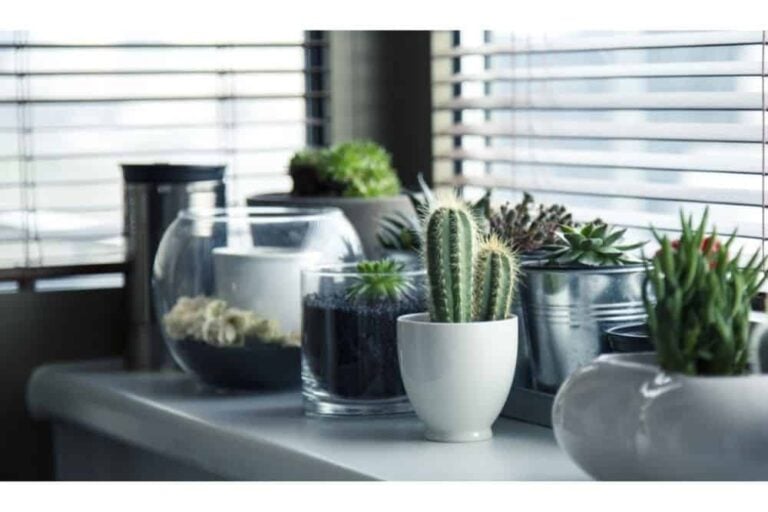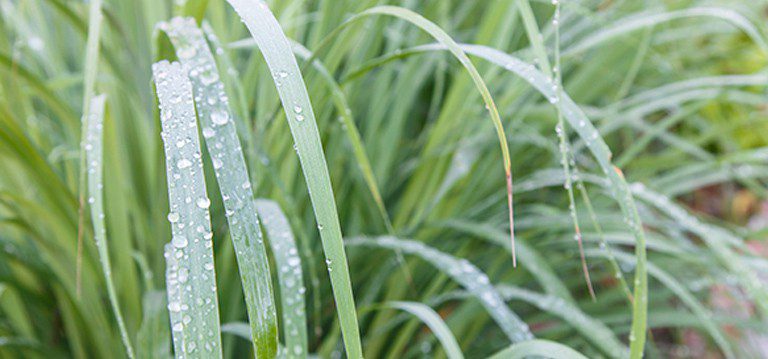Learning How to Grow a Rabbit Foot Fern
Scientifically known as Davallia Fejeensis, a rabbit foot fern is a unique, if not a bit odd-looking, plant. Its furry, leg-like rhizomes gives the plant its name, and it also requires special maintenance to remain looking their best, particularly when it comes to sufficient watering. While this Fiji native can hang outside in warm-weather situations, it particularly thrives in indirect light dictated by seasonal rotation. It also grows best in humid conditions that are accompanied by mild temperatures.
What’s a Rabbit Foot Fern?
The defining feature of most ferns is their lush strands of elegant, delicate looking fronds. Rabbit foot ferns, while possessing this trademark foliage, are not.
Rather, their signature feature is the light brown rhizomes that hang over the side of whatever receptacle you plant the fern. Angular and covered with hairs that can look slightly like fur, these features can take on the appearance of a rabbit’s foot.
This plant, whose scientific name is Davallia Fejeensis, originally stems from Fiji. As you may guess because of this origin, it particularly thrives in a warm climate – its USDA hardiness zones are 10 to 11. More often than not, the fern is grown as an indoor house plant.
The Mighty Rabbit Foot Fern: A Video
If you’re making your first foray into ferns, you’re probably on the market for something that isn’t too fragile or delicate. If so, a rabbit’s foot fern may be your speed, as this video implies. It may look a bit delicate, but looks can be deceiving.
Growing a Rabbit Foot Fern
If you’re buying a rabbit foot fern, you’re going to have a keen interest in showing off its rhizomes. Because of this, the most important step in growing a rabbit foot fern doesn’t necessarily have to do with caring for the plant itself. It’s all about the container.
Ideally, you’ll want a container that allows ample room for the rhizomes to hang over the sides. Keep in mind that the “rabbit feet” can grow to up to two feet in length, so it’s important to prepare a space that can accommodate this size. If you don’t, you’ll have rhizomes that look less like rabbit’s feet and more like a cluttered smoosh of brown fur.
Once you’ve found a proper planter, it’s important to realize that the rabbit feet are needy little appendages. The rhizomes tend to absorb moisture very efficiently, and they can dry out if you aren’t misting them on a regular basis. You don’t have to mist them daily, but you should plan on doing so every few days.
What About the Rest of the Plant?
In a sense, taking care of a rabbit foot fern is like taking care of two plants at once. From a watering perspective alone, maintenance on the rhizomes differs greatly from watering the traditional fern portion.
It’s important that you stick with a misting regiment while handling the rhizomes and not get stuck in the mindset of increased plant watering as a means of “trickling down” excess moisture. If you do that, you’ll over-water your plant, which will cause your plant’s fronds to yellow. You should allow the soil in your container to slightly dry out between waterings.
When you plant the fern, you’ll want to make sure you place it in well-draining, porous soil so that its roots have no problem feeding and growing. You’ll also want to make sure the soil has a neutral pH level of around 7, give or take a few percentage points. You can pick up a soil test kit to make sure you have the right level.
Placing Your Plant
Lighting plays a key role in the long-term health of your rabbit foot firm. As such, it’s important that you realize this plant’s lighting needs is not a “one size fits all” type of situation. It decidedly fluctuates depending on the season.
Part of the reason for this is because rabbit foot ferns are at their best when they’re grown in indirect light. If you put them in direct sunlight, their fronds may get scalded. This could lead to discoloration or other similar forms of nastiness.
Because optimal indirect sunlight changes throughout the year, it’s important that your plants follow the calendar’s patterns. During wintertime, you’ll want to put the plant on a north-facing window. In the spring and summer, an east-facing window if your best bet. South- and west-facing windows will hit the plants with too much light.
You’ll also want to make sure the rabbit foot fern is grown in a moderately humid environment, as ferns in general thrive under such condition. During the winter months, you may want to consider putting a humidifier in the room that your plant is located. Alternatively, you can consider placing the plant on a tray of wet pebbles, which can increase local humidity.
As far as temperature goes, keeping things between 60 and 75 degrees Fahrenheit in your home will please your rabbit foot plant greatly. If the temperature dips below or above this range, you can mitigate any negative effects by adjusting your watering schedule.
Other General Maintenance
Fertilizer can be your best friend when growing a rabbit foot fern, provided that you go about things smartly. In other words, don’t over-do things. Too much fertilizer will end up doing more harm to the fronds than good. You can plan to use liquid fertilizer monthly, but only after the fern has been planted for 4 to 6 months.
You’ll also want to routinely expect your plant for various pests. Gnats, mites, and other tiny critters thrive on rabbit foot ferns. Fortunately, you can take care of the issue by simply brushing them off with a wet towel.
If you tend to your rabbit foot fern with these basic steps, you’ll have a lovely houseplant whose beauty you can enjoy for years. It’s arguably the most unusual fern out there, but that’s probably why you picked it up in the first place.
You may also read our article about Lucky Bamboo.
Photo by Sandy Poore Licensed Under CC BY-SA 2.0



